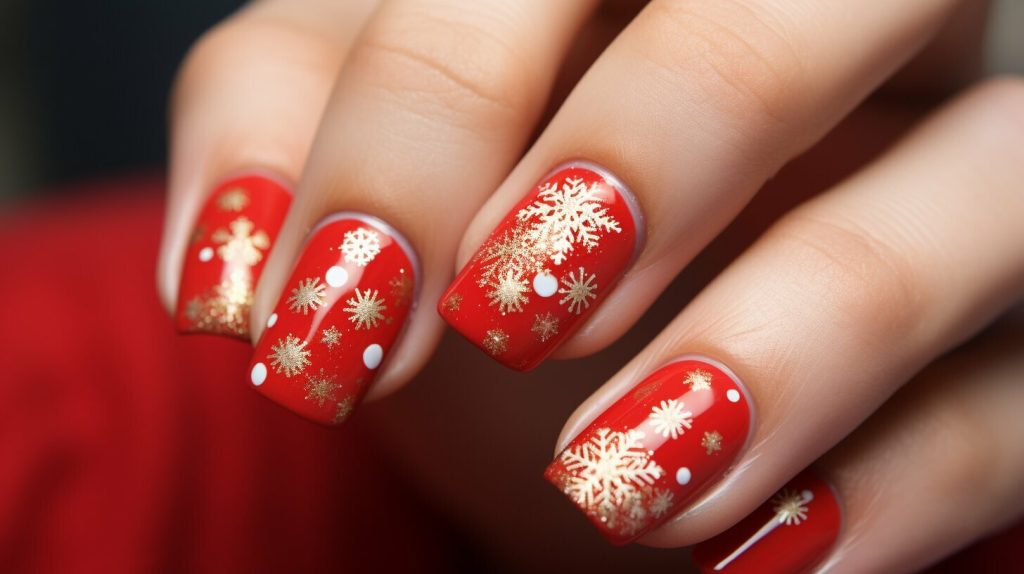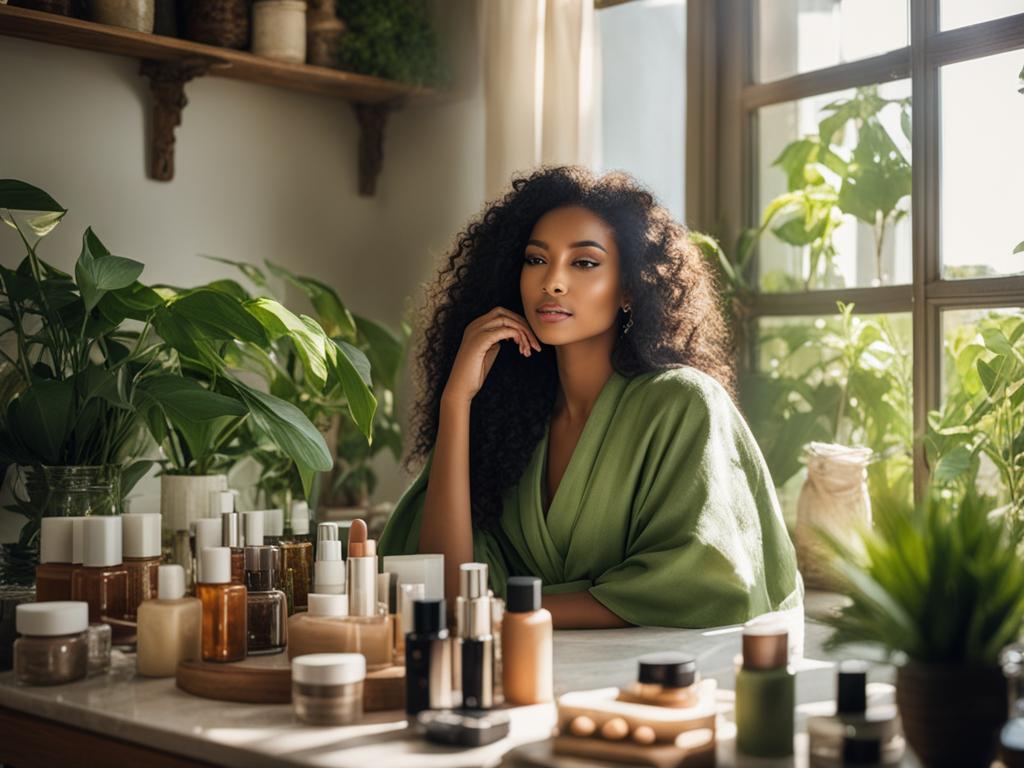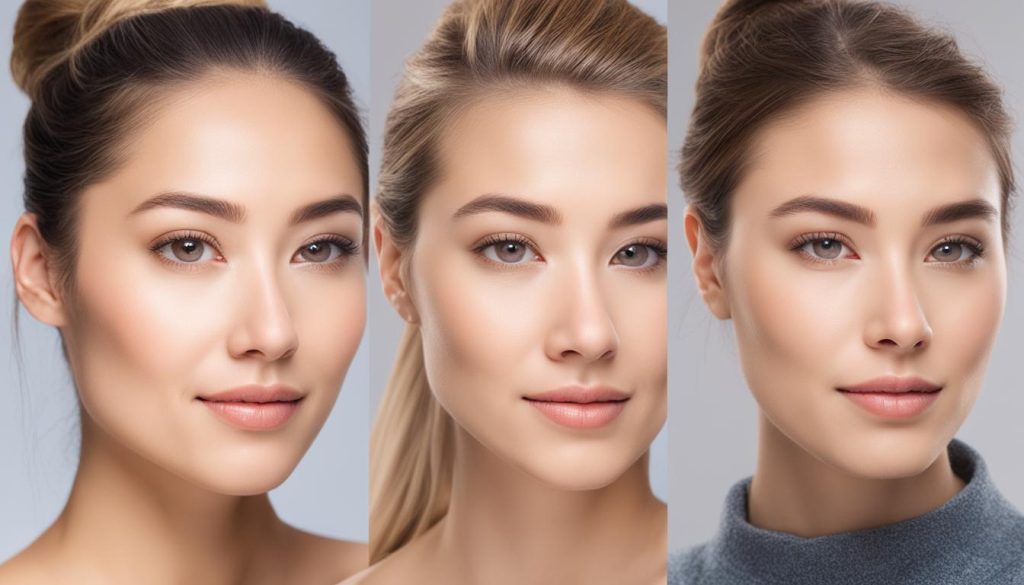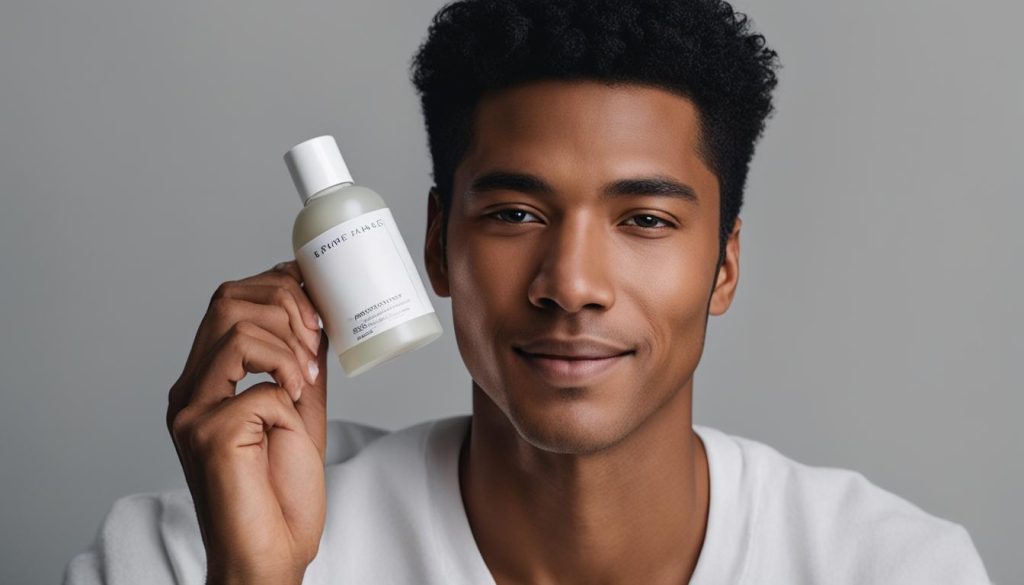As someone who has delved into the world of skin care for years, I’ve come to recognize the pivotal role that nurturing the under-eye area plays in maintaining a vibrant, youthful look. Esteemed dermatologic surgeon Dendy Engelman, MD, reminds us how the thinness of the under-eye skin renders it susceptible to dehydration, leading to aging signs such as puffiness, dark circles, and wrinkles. Meanwhile, David Shafer, MD, a reputable plastic surgeon based in New York City, reiterates the importance of consistent hydration in this delicate region.
My exploration into high-quality, peer-reviewed research, coupled with insights from skincare experts, has solidified my conviction in the transformative power of a dedicated under-eye regimen. Integrating products that excel in moisturizing under eyes, employing hydrating under eye treatment, and indulging in the ritual of nourishing under eye skin, are fundamental steps in rejuvenating and preserving the delicate orbit of our gaze.
For those seeking to reverse or prevent the telltale signs of fatigue and age, prioritize a rejuvenating under eye area care routine that’s as attentive as your skincare for the rest of your face. Embracing a reliable under eye moisturizer, tailored for the unique requirements of this sensitive skin, is not merely a luxury – it’s an essential. Let’s delve into effective ways to quench our under-eye thirst for moisture and sustain its allure.
Key Takeaways
- Understanding the delicate under-eye skin is key to selecting the right moisture products.
- Opt for under-eye treatments that prioritize hydration to combat common concerns like puffiness and dark circles.
- Incorporate a skin care routine that gives special attention to eyes, using products designed specifically for this area.
- A moisturizer tailored to the under-eye area should rejuvenate and prevent premature signs of aging.
- Evidence-based advice and high-quality ingredients in under-eye moisturizers can enhance overall eye skin health.
The Delicate Matter of the Under-Eye Skin
The skin around the eyes is often the first place I notice the signs of aging and the impact of lifestyle habits. Its delicate nature makes it susceptible to a variety of issues that can contribute to a tired and aged appearance. Proper care is therefore critical in maintaining a youthful and vibrant look. Here’s an understanding of the challenges this area faces, and steps to prevent premature aging and dryness.
Understanding the Under-Eye Area
The eye area is distinctive in its structure: it hosts the thinnest skin on our face, which inherently has less capacity for retaining moisture. With reduced hydration levels, it is prone to quicker deterioration and damage. What’s more, the skin in this zone contains fewer oil glands compared to the rest of the face, making it less protected against the elements and prone to dryness.
Signs of Under-Eye Dehydration
Reducing under eye dryness is essential because once dehydration sets in, it can express itself in various concerning ways. Dark circles become more pronounced, and the skin begins to take on a crepey texture. I’ve noted that dehydration can cause fine lines to appear more evident, and in some cases, what resembles scales may form, indicating severe lack of moisture.
Why Early Aging Shows Here First
Preventing under eye wrinkles is a challenge due in large part to environmental and lifestyle factors that accelerate the aging process. Since the skin around the eyes is unable to hold onto hydration effectively, it shows wear more readily. Additionally, our frequent facial expressions stress this area repeatedly, leading to dynamic lines and wrinkles. By taking proactive measures, I’ve found that one can minimize these signs of aging and maintain a smoother, more elastic under-eye appearance.
As I navigate through my skincare routine, I am reminded by experts to address each concern with delicacy and purpose. This eye area, so reflective of our age and experiences, deserves the utmost attention and care to remain radiant and healthy.
Unveiling the Truth: Hydrating vs Moisturizing Under Eyes
As someone deeply passionate about skincare, I recognize that the terms ‘hydrating’ and ‘moisturizing’ are frequently tossed around interchangeably, especially when it comes to the delicate eye area. However, nurturing the hydrating eye area isn’t as simple as applying any cream available; it involves a nuanced approach that includes both hydrating and moisturizing techniques. Understanding the distinction between them is a core component of how to thoughtfully and effectively take care of under-eye skin naturally.
Hydration, to put it clearly, pertains to the water content within the skin cells, making them swell with moisture for a plump, vibrant appearance. Meanwhile, moisturizing refers to the overlying action of protecting that precious moisture with an occlusive layer, preventing it from evaporation and supporting the skin’s natural barrier function. Consequently, under eye moisturizers play a vital role, but only when harmonized with tactics to boost hydration levels.
- Identify Hydrating Ingredients: Look for products containing ingredients like hyaluronic acid or glycerin, which are known for their ability to draw and hold water.
- Layer Appropriately: First apply hydrating serums or gels to replenish water in the skin cells, followed by a good moisturizer to lock in that moisture.
- Boost Natural Hydration: Encourage skin’s hydration by drinking plenty of water and consuming a balanced diet rich in Omega-3 fatty acids and antioxidants.
- Protect Your Skin: Regular use of SPF to defend against UV rays and avoid dehydration caused by environmental damage.
Integrating both hydrating and moisturizing under eyes into your skincare ritual ensures you’re not only supplying your skin with the moisture it needs but also building a shield to safeguard that hydration throughout the day. This holistic approach prevents the common problems associated with under-eye skin dryness and paves the way to a more resilient, refreshed-looking eye area.
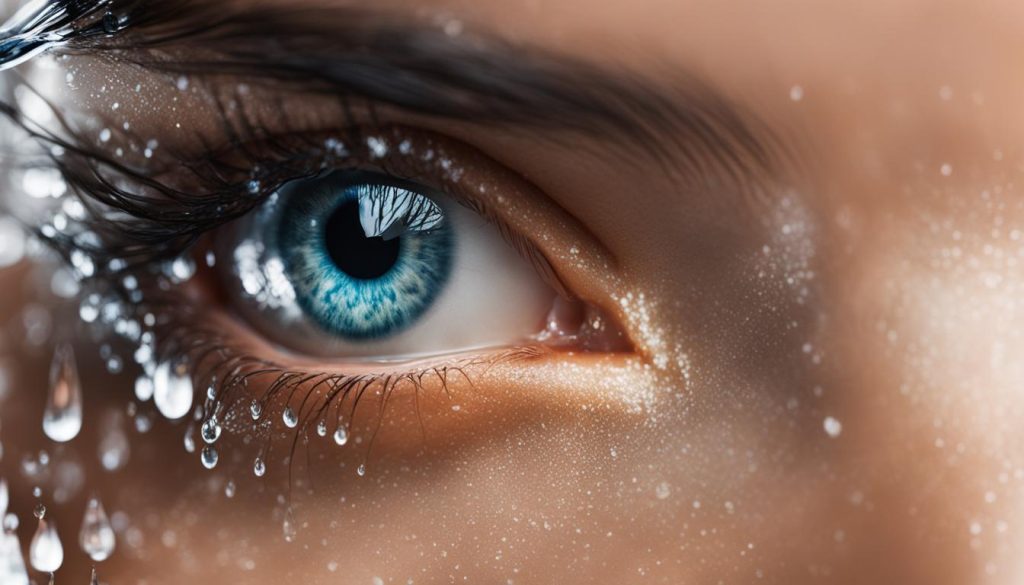
Amplify Your Eye Area: Expert Hydration Techniques
As a seasoned skincare advocate, I understand that maintaining a dynamic under-eye care routine goes beyond mere aesthetics—it is essential for the health and vitality of your skin. The quest for the best under eye moisturizer starts with a comprehensive approach to hydration.
Proper Water Intake: The First Step
Initiating my day with adequate water intake, I lay the foundational stone for a hydrated complexion. I’ve realized, echoing expert dermatologists’ opinions, that water is a critical internal moisturizer, and my skin, especially the delicate area under the eyes, shows significant improvements when I’m properly hydrated.
Targeted Under-Eye Products
In pursuit of hydration, I turn to targeted under-eye products. I carefully select eye cream for dry skin, ensuring it includes powerhouse humectants like hyaluronic acid and glycerin. These ingredients are central to my under-eye care routine, as they deftly draw in and retain moisture. For a natural under eye moisturizer, I look for creamy concoctions that leverage plant-based ingredients known for their hydrating properties.
Environmental Factors and Your Skin
I’m acutely aware of how environmental factors can lead to under-eye dryness. Whether I’m up against a harsh winter wind or the dry air of conditioned spaces, I don’t shy away from applying the best under eye moisturizer tailored to these challenges. My anti-aging under eye cream is a faithful companion that fortifies my skin against daily environmental stressors.
- Always keep hydrated; it’s the essence of vibrant skin.
- Choose eye creams enriched with humectants for maximum moisture attraction.
- Adjust your under-eye care routine to reflect environmental conditions.
The Relationship Between Eye Creams and Puffiness
As a beauty enthusiast, I’ve noticed a recurring concern: certain eye creams making eyes puffy or even worsening the appearance of the eye area. Understanding why an eye cream makes my eyes worse has been crucial in my journey to finding the perfect nourishing eye cream and hydrating eye serum. It’s pivotal to select products designed specifically for the delicate eye area to tackle the issue of puffiness effectively.
Through personal experience and comprehensive research, I’ve discovered that the content and application of eye creams are paramount. A few culprits include harsh ingredients or even natural ones that might not agree with everyone’s skin. It’s essential to keep an eye out for key nourishing agents such as glycerin, sodium hyaluronate, and peptides which are the heroes in the fight against puffiness.
- Always patch-test a new eye cream before fully integrating it into your routine.
- Apply the cream with a gentle touch; do not rub vigorously as it can promote swelling.
- Look for ingredients that are known for their soothing and anti-inflammatory properties.
- Avoid products with fragrances or alcohol particularly if you have sensitive skin.
Maintaining a disciplined regimen and being mindful of the products I use has reduced the instances of puffiness significantly. I can vouch for the efficacy of investing in a good-quality eye cream that serves its purpose without complicating your under-eye health.
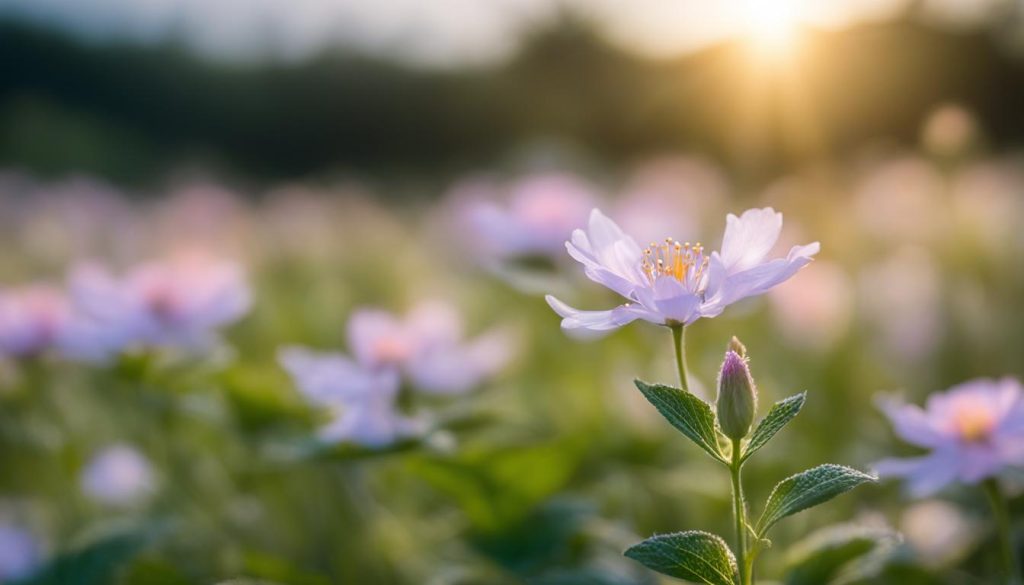
Choosing the Best Under Eye Moisturizer for Your Skin Type
When it comes to maintaining a youthful and radiant under eye area, selecting the right moisturizer around eyes is imperative. Given the plethora of options, it can be challenging to find that perfect natural under eye moisturizer or anti-aging under eye cream that caters to my unique skin needs. Let’s delve into the factors we should consider for effective under eye skincare, ensuring that we protect and nurture this delicate region.
Analyzing Ingredients for Maximum Benefit
In my quest for eye creams, I prioritize those forged with ingredients aimed at combating the signs of aging and dryness. Hyaluronic acid, known for its unparalleled hydrating properties, holds the key to skin that’s supple and plump. Peptides, another cornerstone of anti-aging, support collagen production, vital for maintaining the skin’s elasticity. And let’s not overlook ceramides which fortify the skin’s natural barrier. Together, these components help to create a formidable defense against the test of time.
- Hyaluronic Acid for deep moisture
- Peptides to encourage collagen
- Ceramides to reinforce the skin barrier
Between the Lines: Reading Labels for Eye Area Safety
Diligently studying labels has become part of my ritual in selecting an under eye skincare potion. I’m on the lookout for non-irritating, gentle formulas devoid of harsh chemicals and pervasive fragrances that might do more harm than good. My eyes deserve care that isn’t compromised by potential inflammatory substances, so I take the time to examine each label closely before making a commitment.
Remember, a small dollop of cream is sufficient; after all, a little goes a long way in under eye skincare. Embracing a routine that incorporates these mindful practices will not only safeguard the eye area but potentially turn back the clock, or at least slow its relentless march. Hence, let’s pledge to treat our eyes with the reverence they deserve and choose our creams wisely.
Common Missteps in Moisturizing Under Eyes
Moisturizing under the eyes is essential, but it’s all too easy to falter in the pursuit of a healthy under-eye area. I’ve seen many assume that the heavier the cream, the better the moisture; however, this isn’t always the case for this delicate zone. Vigilance is necessary to avoid the common slip-ups that can do more harm than good. Let’s deliberate on some key don’ts in under-eye skin care.
Avoiding Irritation: What Not to Do
First and foremost, heed the alarm bell: don’t put moisturizer under eyes if it’s not specifically designed for that area. The skin there is thinner, more fragile, and can react adversely to perfectly safe ingredients for the rest of your face. Watch out for the sneaky entrance of moisturizer in eyes too – a phenomenon that can trigger irritation or even an infection. My personal practice is to champion the use of products that marry efficacy with gentleness, steering clear of artificial fragrances and irritants.
Navigating Around Misleading Under-Eye Skin Care Myths
Equally imperative is to navigate around the flotsam of myths in under-eye care. For instance, the legend that suggests all facial moisturizers double as eye creams. This is a fallacy that disregards the unique biochemistry of under-eye skin. The outcome for the misinformed is often not healthy under eyes, but a battleground exhibiting puffiness, redness, or worse. Through trial and informed selection, I’ve learned to treasure transparency and seek the truth behind ingredient lists, ensuring my under-eye regimen supports and nourishes rather than undermines my delicate eye area.
FAQ
What are the best practices for moisturizing under my eyes?
To effectively moisturize under your eyes, gently apply a product formulated specifically for the delicate eye area. Look for ingredients like hyaluronic acid, peptides, and ceramides. Be careful to not over-apply and ensure the moisturizer doesn’t enter your eyes.
How is skin care for the eyes different from the rest of the face?
The skin around the eyes is thinner and more vulnerable to dehydration and signs of aging. It requires products that are specifically formulated to be gentle yet effective in addressing these concerns, unlike the typically stronger formulations used for the rest of the face.
How can I tell if the skin under my eyes is dehydrated?
Signs of under-eye dehydration include dryness, a dull or tired appearance, fine lines, and flakiness. The skin may also feel tight and less pliable.
Why do early signs of aging often appear under the eyes first?
The under-eye skin is more prone to showing early signs of aging due to its thinness, which leads to it being less able to retain hydration, and a lower presence of oil glands. This can result in fine lines, wrinkles, and dark circles developing sooner than in other areas.
What is the difference between hydrating and moisturizing under the eyes?
Hydrating refers to increasing the water content within skin cells to make them plump and vibrant, typically using ingredients called humectants. Moisturizing is about locking in this hydration with a protective barrier. Both are essential for a healthy under-eye area.
How can I keep the skin under my eyes hydrated naturally?
Ensure you are drinking plenty of water to hydrate from within. Use eye creams with natural humectants like glycerin or hyaluronic acid. You can also use natural oils, like almond oil, which provide hydration and a protective barrier.
Can eye creams cause puffiness?
Eye creams, when chosen carefully and applied correctly, should not cause puffiness. However, eye creams with certain ingredients or heavy textures can contribute to puffiness if they don’t agree with your skin or are applied improperly.
How do I choose the best under-eye moisturizer for my skin type?
Identify whether your skin type is dry, oily, sensitive, or a combination. Read labels to choose a product with ingredients that cater to your specific concerns, such as hyaluronic acid for hydration or peptides for anti-aging, while avoiding those with chemical irritants or fragrances.
What are the most common mistakes when moisturizing under eyes?
Common mistakes include using products not intended for the sensitive eye area, misapplying the product by rubbing too hard or getting it in the eyes, over-moisturizing which can lead to milia or breakouts, and using products with fragrances or irritants.
How can I avoid irritation when moisturizing my under-eye area?
To avoid irritation, use eye-specific moisturizers free of harsh chemicals and fragrances. Apply gently without pulling at the skin. If irritation occurs, discontinue use and consult a dermatologist.
Are there any myths about under-eye skin care I should be aware of?
Yes, a common myth is that you can use your regular facial moisturizer for the under-eye area. Many facial moisturizers are too heavy or contain active ingredients that are too strong for the delicate under-eye skin, which can lead to irritation or milia.

